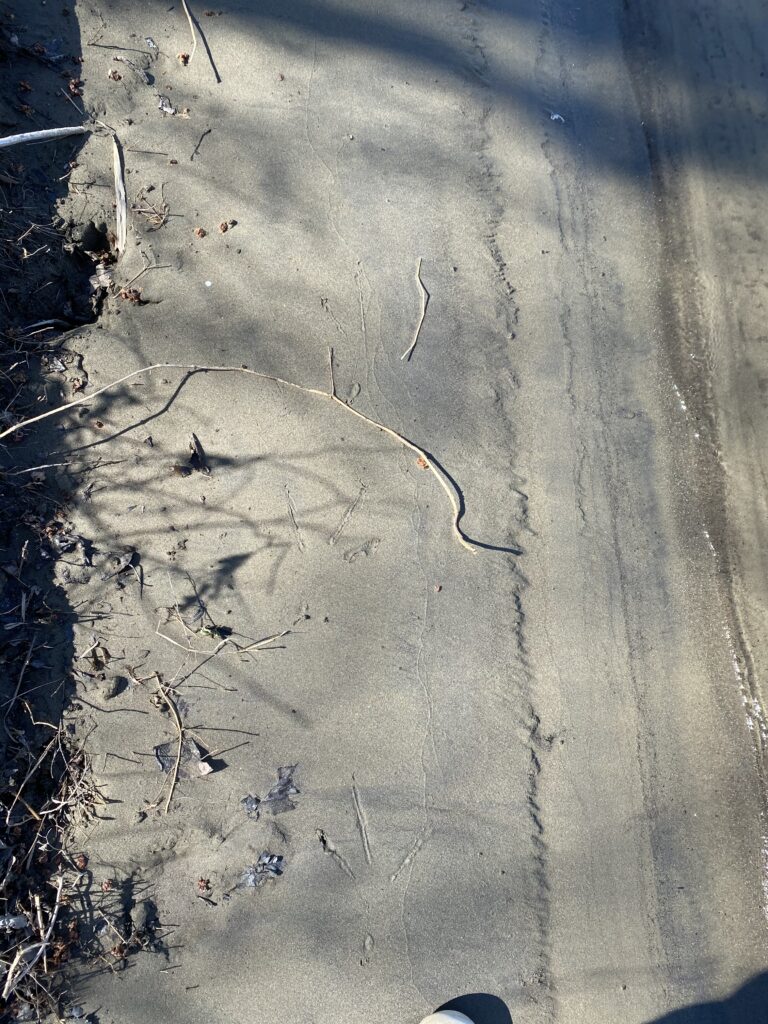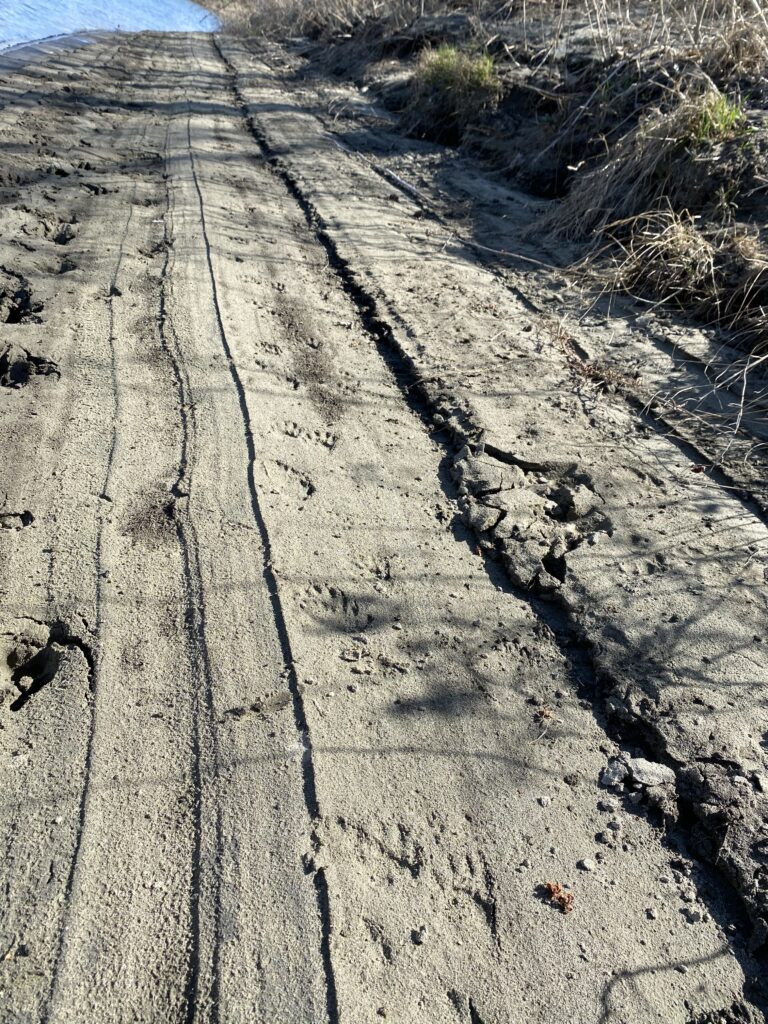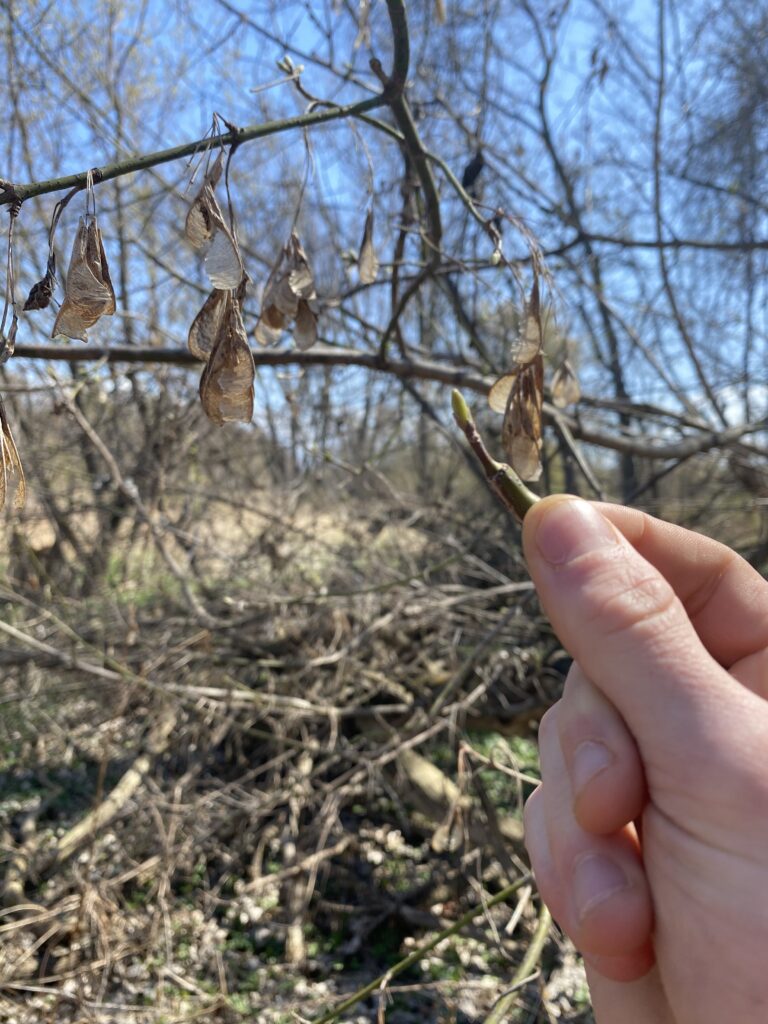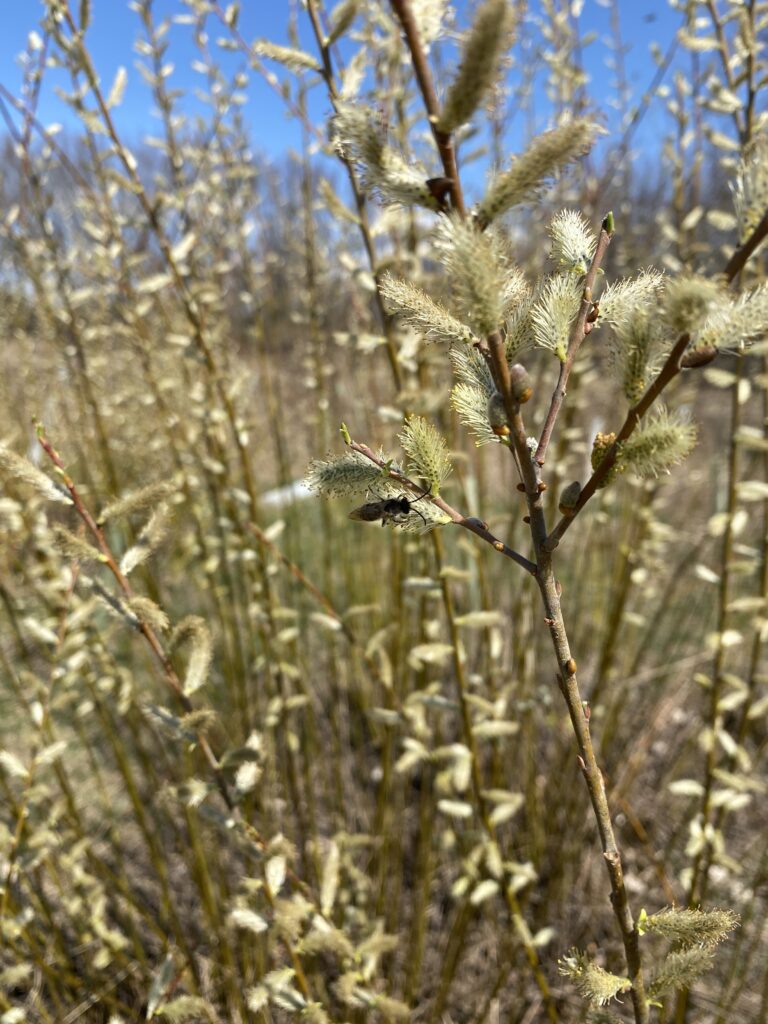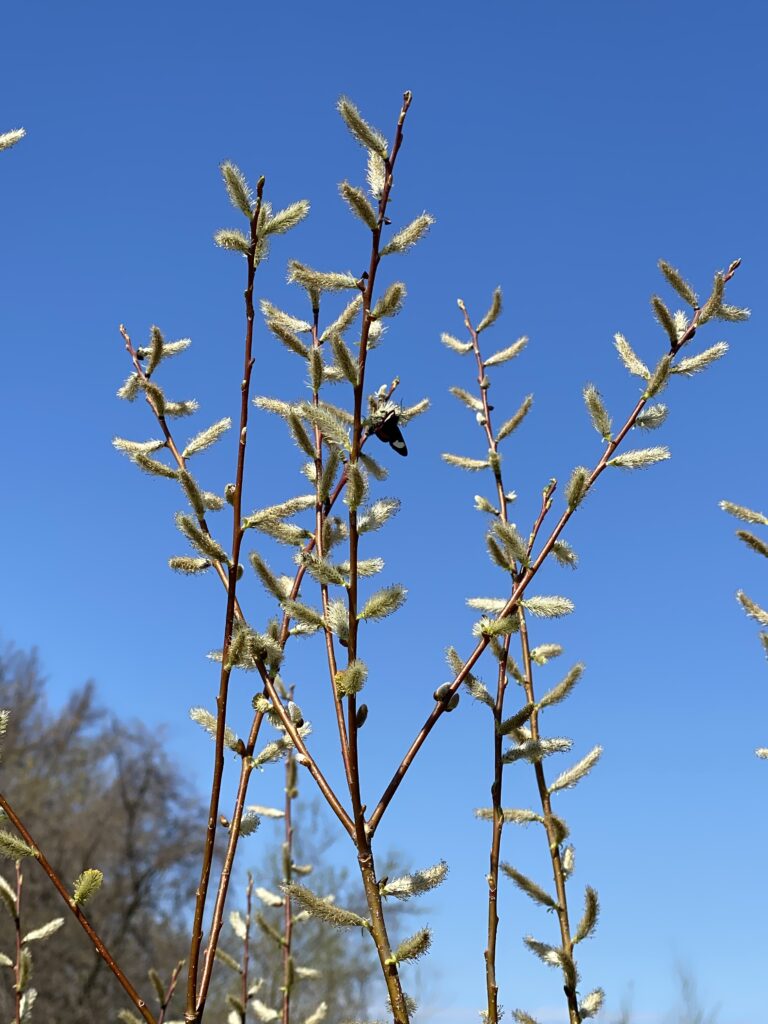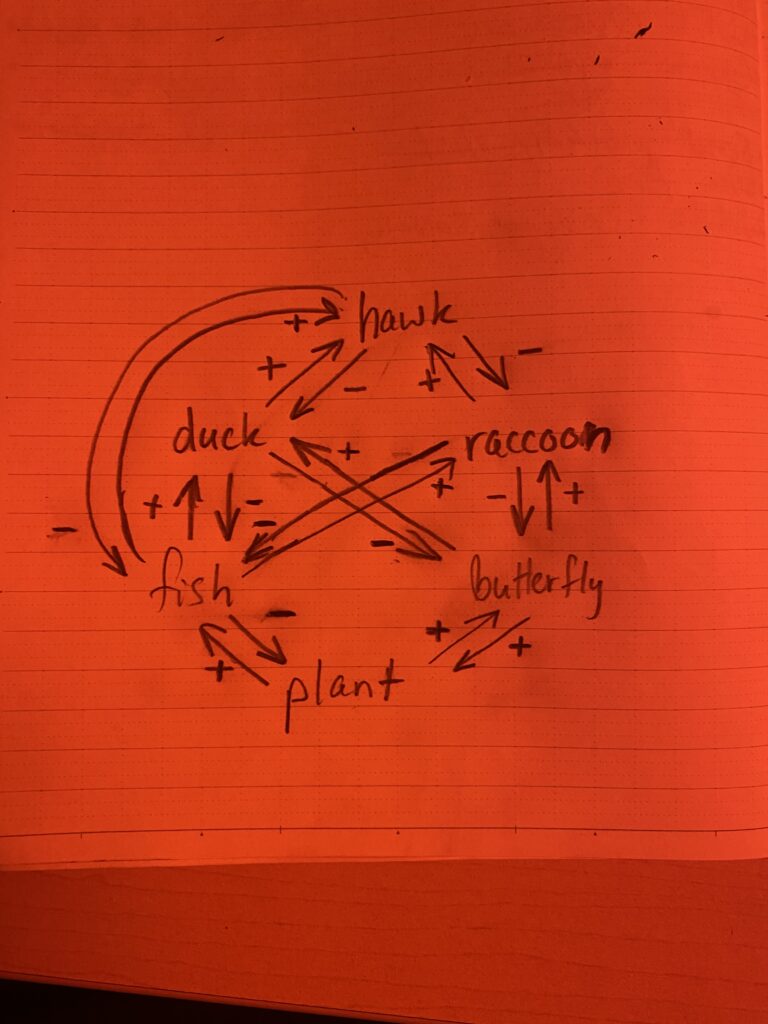Just like the rest of Burlington, the snow at McKenzie Park melted weeks ago. The trails were a bit muddy because of rain earlier in the week, so I was hoping I could spot some animal tracks in the mud. However, I was reminded of how many dogs romp around in the park, so I took my focus on animal tracks to the riverside instead.
Before I arrived at the beach though, I observed how the recent rain had affected McKenzie’s newly blooming vegetation. Most of the forest was made up of bare trees, however, buds had formed at the ends of many of them. I clipped three different buds from trees to observe in a vase over 10 days. Looking off into the distance, many of the trees gave off slightly tinted shades of yellow and green, due to the photosynthetic organs on these plants that were finally sprouting this time of the year. This created a beautiful mosaic amongst the bland brown masses of sticks if one looked hard enough.
Down by the river, there was a lot of activity in the sand. Dog and human footprints often blurred what could be read about the riparian wildlife, but plenty of footprints from other sources could still be spotted. What really caught my eye was the very clear human-infant-looking tracks along the beach. They traveled perpendicular to the river, and at a consistent distance from the river as far as I could feasibly observe. My prediction is that a raccoon (or possibly a possum) was scouring the riverside for potential sources of food, likely frogs or fish.
As I walked along, I startled a frog and some minnows, and witnessed a fish jump out of the water. Soon after, a few ducks flew to the general area of the splash. As I was leaving McKenzie, I got a couple of good shots of the local pollinators. Bees were working on an early-blooming bushy plant, while a butterfly sipped the plant’s nectar.
